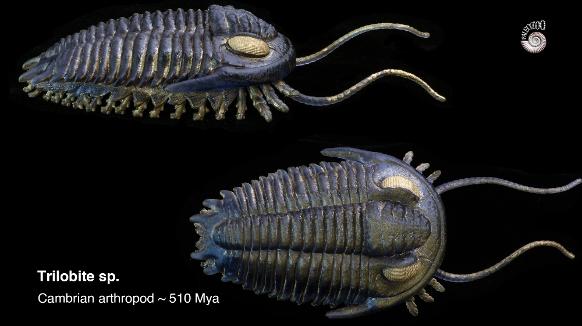Trilobites are extinct marine arthropods - with flattened oval bodies, three part segmented exoskeletons, compound eyes and limbs with branching gills (biramous limbs).

Amongst the most iconic of all fossils, Trilobites thrived around the world, throughout the entire Paleozoic Era (~541 Mya ~ 252 Mya). The longevity of their existence makes them a key index fossil - helping to define and date the age of periodic horizons and in turn helping define the age of the Earth.
Trilobite fossils have been a source of fascination for many thousands of years and they have been found in ancient burial sites, presumably being used as talismans. In more recent times they have become central to Paleozoic studies and major collector items.
Though predominantly found in the shallower margins, trilobites were abundant throughout the oceans of the world and their fossil remains have been found on every continent.
There have been over 20,000 different species of trilobite discovered, ranging across 10 orders. They exhibit numerous anatomical adaptations that helped them survive in almost every niche of the marine environment.
Trilobites had remarkable compound eyes made up of thousands of hexagonal calcite cells. These cells acted as individual lenses and were very durable with some even able to polarize light. It is presumed that many trilobites had excellent vision. There are indications that a few trilobite species even developed stereoscopic vision. As this is seen as a requirement for effective predation it has added to the speculation that some trilobites evolved into agile hunters that swam in search of prey.
Because of their wide variety and distribution over such an extensive period of time, trilobites have become one of the most important index fossil for earth scientists and evolutionary biologists. This is not only because of their ability to mark points in time but also that they serve as examples of how the mechanics of evolution work in conjunction with changing environmental conditions.
Trilobites were one of the most successful class of animal in the history of the planet existing for over 300 million years - spanning almost the entire Paleozoic Era.
